Text
7 Reasons Why You Should Go to Maple Ridge Dentistry
If you have been searching for a good dentist in Maple Ridge, BC, there are many things you should take into consideration. Here are just some of the reasons why you should give Maple Ridge Dentistry a call:
1. They offer a wide range of dental services
No matter what dental needs you may have, Maple Ridge Dentistry can help. They offer everything from general dentistry to cosmetic dentistry, so you can be sure that you will be able to find the services you need.

2. They have a great location
Maple Ridge Dentistry is conveniently located in the heart of Maple Ridge. This means that you will not have to travel far to get to the dentist, which is always a plus.
3. They offer a variety of payment options
Maple Ridge Dentistry accepts a variety of payment options, so you should be able to find a payment plan that works for you. This is always a good thing to look for in a dentist.
4. They offer a variety of dental insurance plans
If you have dental insurance, Maple Ridge Dentistry can help you make the most of it. They accept a variety of dental insurance plans, so you should be able to find one that will work for you.
5. They offer a variety of dental financing options
If you need dental financing, Maple Ridge Dentistry can help you find the right financing option for you. They offer a variety of dental financing options, so you should be able to find something that works for you.
6. They offer a variety of dental specials
If you are looking for a good deal on dental services, Maple Ridge Dentistry can help you find the right dental specials for you. They offer a variety of dental specials, so you should be able to find one that will work for you.
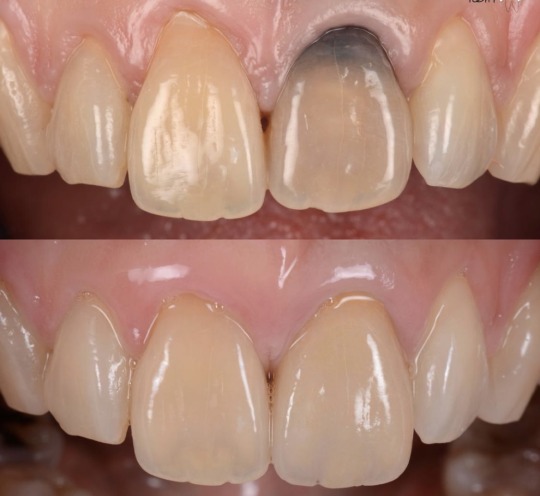
7. They offer a variety of dental discounts
If you are looking for a good deal on dental services, Maple Ridge Dentistry can help you find the right dental discounts for you. They offer a variety of dental discounts, so you should be able to find something that works for you.
The Basics of Toothaches and Tooth Pain
If your tooth hurts when you bite down, you have a toothache. If you have a dull, throbbing pain all the time or sharp pain when you bite down, you have a toothache.
Tooth pain is caused by inflammation and swelling of the nerve inside the tooth. The inflammation can be caused by many things, including infection, tooth decay, gum disease, a cracked tooth, or a loose filling. The nerve can also be irritated by hot or cold food or drinks, or by biting your tongue or cheek.
Tooth pain can be very severe and can make it hard to eat, drink, or sleep. If you have a toothache, you should see a dentist as soon as possible.
How to Prevent Toothaches
The best way to prevent toothaches is to brush and floss your teeth every day and see your dentist regularly.
If you have a toothache, here are some things you can do to relieve the pain:
Take over-the-counter pain relievers such as ibuprofen (Advil, Motrin) or acetaminophen (Tylenol).
Apply a cold compress to your cheek.
Gently floss your teeth to remove any food that may be caught between them.
Avoid hot or cold food and drinks.
If the pain is severe, see your dentist as soon as possible.
Take over-the-counter pain relievers such as ibuprofen (Advil, Motrin) or acetaminophen (Tylenol).
Apply a cold compress to your cheek.
Gently floss your teeth to remove any food that may be caught between them.
Avoid hot or cold food and drinks.
If the pain is severe, see your dentist as soon as possible.
What are the Signs of a Dental Abscess?
The signs of a dental abscess include:
-A painful, throbbing sensation in the affected tooth
-Sensitivity to hot and cold temperatures
-Sensitivity to biting or chewing
-Visible swelling in the gums
-A small pimple-like bump on the gums
-Bad breath
-Fever
-Swollen lymph nodes
Dental Hygiene Tips & Tricks for a Healthy Mouth
1. Schedule Regular Dental Appointments: Keeping up with regular dental appointments is one of the best ways to maintain good dental hygiene. Be sure to see your dentist every six months, or as recommended.
2. Brush Correctly: Brushing correctly is crucial for good dental hygiene. Be sure to use a soft-bristled toothbrush, and brush gently in a circular motion. Be sure to also brush your tongue to remove bacteria.
3. Floss Regularly: Flossing is just as important as brushing. Be sure to floss at least once a day, using a gentle back and forth motion.
4. Use Fluoride Toothpaste: Fluoride toothpaste can help to prevent cavities and tooth decay. Be sure to use toothpaste that contains fluoride.
5. Limit Sugary Foods and Drinks: Sugary foods and drinks can contribute to cavities and tooth decay. Be sure to limit your intake of sugary foods and drinks, and brush your teeth afterward.
6. Quit Smoking: Smoking is bad for your teeth and gums. Be sure to quit smoking to maintain good dental hygiene.
What to Expect From Your First Appointment With Your Dentist
If you have never been to a dentist before, the idea of going to one can be quite daunting. However, there is no need to worry. Here is what you can expect from your first appointment with your dentist.
When you first arrive at the dentist's office, you will be asked to fill out some paperwork. This paperwork will ask for your personal information, as well as your dental history. Be sure to answer all questions as accurately as possible.
After you have completed the paperwork, you will be called into the examination room. The dentist will ask you to sit in the chair and open your mouth. He or she will then use a small mirror to look at all of your teeth.
The dentist will also use a small instrument called a probe to check for cavities. If the dentist finds any, he or she will take an x-ray. The x-ray will help the dentist determine the size and depth of the cavity.
After the examination, the dentist will discuss your treatment options with you. If you have cavities, the dentist may recommend that you have them filled. If you have gum disease, the dentist may recommend that you have your gums treated.
Once you have decided on a treatment plan, the dentist will give you a date for your next appointment. Be sure to keep this appointment so that you can get the treatment that you need.
0 notes
Text
The Comprehensive Guide to Maple Ridge Dental and Everything You Need to Know
Welcome to the guide to Maple Ridge Dental and everything you need to know about getting dental care in this great city. Dental care is extremely important for your overall health, and it’s something that you should never neglect. In this guide, we’ll cover everything from finding a great dentist to getting the most out of your dental care.

There are a lot of great dentists in the city of Maple Ridge, but it can be tough to know where to start. The best place to start is by asking around. Talk to your friends and family and see if they have any recommendations. Once you have a few names, you can start doing some research online.
When you’re looking for a dentist, you want to make sure that you find one that is certified by the American Dental Association. This will ensure that they are up to date on all of the latest dental procedures and that they follow all of the ADA’s guidelines. You also want to make sure that the dentist you choose accepts your insurance.
Once you’ve found a few dentists that you’re interested in, you can start making appointments. Most dentists will offer a free consultation, so you can get to know them a little better before you make a commitment.
When you’re at the dentist, you want to make sure that you feel comfortable. If you don’t feel comfortable, you should look for another dentist. You also want to make sure that you feel like you can trust the dentist. If you don’t feel comfortable with the dentist, you should find someone else.
After you’ve found a dentist that you feel comfortable with, you can start talking about your dental care. You want to make sure that you understand all of the options that are available to you. You also want to make sure that you understand the costs associated with each option.
When you’re ready to make an appointment, you want to make sure that you give the dentist all of the information that they need. This includes your contact information, your insurance information, and your medical history. You also want to make sure that you let the dentist know what you’re looking for in a dentist.
After you’ve made an appointment, you want to make sure that you keep your appointment. You don’t want to miss your appointment because you didn’t show up on time. You also want to make sure that you bring your insurance card with you.
After your appointment, you want to make sure that you follow up with the dentist. You want to make sure that you understand everything that was done during your appointment. You also want to make sure that you understand the results of your treatment.
It’s important to remember that dental care is important for your overall health. You want to make sure that you take care of your teeth and gums. You also want to make sure that you take care of your overall health.
Maple Ridge Dentist Services - What are Your Options?
There are many dental services available from Maple Ridge dentists. It is always important to discuss your dental needs with your dentist. Many dental services are available for those who have gum disease, tooth decay, and other dental problems. Your dentist may recommend you get a deep cleaning, which will remove plaque and tartar from your teeth. They may also recommend you have your teeth whitened.
There are also many different dental services available for children. Your children may need dental treatments that are different than what is available to adults. They may need to have their teeth straightened, or they may need to get their teeth cleaned. You should discuss your child's dental needs with your dentist. They will be able to recommend the best dental services for your child.
There are also many different dental services that are available to adults. If you have gum disease, you may need to get a deep cleaning. If you have tooth decay, you may need to get a tooth whitening treatment. If you have any other dental problems, your dentist may recommend that you get a dental crown. A dental crown will help to protect your tooth from being damaged.
What Makes Maple Ridge Dental Unique?
Maple Ridge Dental has been providing high-quality dental care to patients in the Maple Ridge area for many years. The team at Maple Ridge Dental is dedicated to providing each patient with personalized care and attention. Maple Ridge Dental is a state-of-the-art dental facility that offers a wide range of dental services, including general dentistry, cosmetic dentistry, orthodontics, and more. Maple Ridge Dental is committed to providing each patient with the best possible dental experience.
0 notes
Text
Maple Ridge Dentist, a Patient's Best Friend to Save Time & Money
Maple Ridge dentist is a reliable source to save both your time and money. You can trust that your smile will be protected and your oral health will be improved. Maple Ridge dentist offers a wide range of services, so you can be assured that your smile is protected and your oral health is improved.

Dental care is a good way to improve your overall health, but it can also be expensive. That is why it is important to find a dental care plan that will work for you. There are several options available, so you can find the dental care plan that fits your budget. You can also find a dental care plan that will fit your needs.
Some of the most common dental services include teeth whitening, dental implants, and veneers. These services can be performed at a dental office or home. The dental office will provide you with a dental care plan that fits your needs.
Dental implants are one of the most popular dental services. This is because implants offer a natural look and feel. They are also durable and can last for many years.
Veneers can be used to cover cracked or chipped teeth. Veneers are placed over the existing tooth to give it a new look. Veneers are usually made of porcelain or composite material. Veneers are placed over the existing tooth to give it a new look. Veneers are usually made of porcelain or composite material.
How to Choose Which Maple Ridge Dentist Fits Your Oral Care needs?
When you are considering which Maple Ridge dentist suits your oral care needs, you must consider the type of dental practice they have. If you are looking for a more comprehensive dental practice, then you might want to consider choosing a dentist who has a general dental practice. However, if you are simply looking for a dentist who can provide you with basic dental care, then you might want to consider choosing a dentist who specializes in a specific area of dentistry.
It is also important that you consider the location of the dental practice. If you live in an area where there are a lot of people, then you might want to consider choosing a dentist who is located near your home or office. However, if you live in a more rural area, then you might want to consider choosing a dentist who is located in a different city.
It is also important that you consider the experience of the dentist. If you are looking for a dentist who has a lot of experience, then you might want to consider choosing a dentist who has been in practice for a long time. However, if you are simply looking for a dentist who can provide you with basic dental care, then you might want to consider choosing a dentist who is new to the field.
How to Find a Dentist in Maple Ridge
There are a few ways that you can find a dentist in Maple Ridge. You can ask your friends and family for recommendations, search online, or look in the yellow pages. Once you have a few options, you can research each dentist to see if they are a good fit for you.
0 notes
Text
Benefits of Dental Implants And The Way They Will Improve Your Quality of Life
If you're missing one or more teeth, you're not alone. consistent with the American College of Prosthodontists, 69% of adults ages 35 to 44 have lost a minimum of one tooth. Many adults lose more teeth as they grow old.
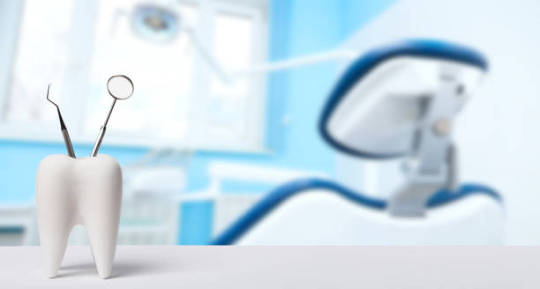
Dental implants are a wonderful solution for missing teeth. they're strong and reliable. They also look and want your natural teeth and may last a lifetime with proper care.
If you're missing one or more teeth, you will want to contemplate dental implants. Here are a number of the advantages of dental implants.
1. Improves Appearance
Dental implants are the foremost natural-looking, durable, and longest-lasting tooth replacement option available. they give the impression of being and want your natural teeth. they're also more permanent than bridges and dentures.
2. Helps Preserve Facial Structure
Dental implants help preserve your facial structure. Without teeth, the bone that after supported them begins to shrink. Dental implants help to stop this bone loss.
3. Improves Speech
Dental implants improve your speech. Slurred or unclear speech could be a common side effect of missing teeth. Dental implants can facilitate your to talk more clearly.
4. Makes Eating Easier
Dental implants make eating easier. Without teeth, chewing are often difficult. Dental implants can facilitate your to eat your favorite foods with ease.
5. Increases Comfort
Dental implants are easier than dentures. they're also more stable. you are doing not should worry about them slipping or severance.
6. Improves Oral Health
Dental implants improve your oral health. they are doing not require special care. you'll brush and floss them similar to your natural teeth.
7. Increases Self-Confidence
Dental implants can increase your self-confidence. you'll not need to worry about your teeth. you'll be able to smile confidently knowing that your teeth look great.
Dental Implant Procedure Explained
The first step in getting a implant procedure is to go to your dentist to determine if you're an honest candidate. Once your dentist has determined that you simply are indeed a decent candidate, you may have to have a consultation with the implant dentist. during this consultation, the dentist will review the method with you, and determine the simplest location for your implant. the following step is that the surgery. This procedure is fairly simple, and can happen within the dental office. The dentist will make an incision in your gum line, and place the titanium screw in your jawbone. Once this is often done, the incision are closed, and you'll tend a neighborhood anesthetic to numb the world. After the surgery, you'll have to anticipate the implant to heal. this can take about four to 6 months for the bone to fuse with the titanium screw. Once this is often done, you'll then have the abutment placed. this is often the piece that may attach the particular tooth to the screw. After the abutment is placed, you'll then have a short lived tooth placed. This tooth are in situ until the adult tooth is prepared to be placed. After the tooth is placed, you may be ready to set about your daily activities as was common. There is also some soreness within the area, but this can get away after a brief time.
Types of Dental Implants
Dental implants are classified into two main types: endosteal implants and subperiosteal implants. Endosteal implants are the foremost common style of implant used today. they're placed within the jawbone and are typically fabricated from titanium, stainless-steel, or a metal alloy. Subperiosteal implants are placed underneath the gum tissue but on or above the jawbone. These implants are often used for patients who don't have enough bone height in their jaw or have medical conditions that prevent them from having surgery. You can try searching for dentist near me to check the available dentists within your area.
0 notes
Text
Is Invisalign Cheaper than Braces? Let's Find Out Here.

You may have heard of invisible braces as another option to traditional braces. But how do they work? Most orthodontic patients are curious about these clear teeth aligners because they don't look like those traditional metal braces which are made up of wires and brackets. Get familiar with both Invisalign and braces before deciding on which one you’d like to use for your teeth-straightening treatment.
Braces
When people think of braces, painful metal brackets and wires often come to mind. The brackets, made of metal, are glued to your teeth and held together with wires and rubber bands. These rubber bands come in different colors, so patients can change things up every time they get their braces tightened. The procedure involved in tightening braces occurs about once a month. Unfortunately, you will experience some jaw pain, and gum and teeth discomfort every time.
Invisalign
Invisalign are teeth aligners that many refer to as invisible braces. They are made out of medical-grade plastic based on impressions of your mouth. They work just the same as braces, except there are no wires, metal brackets, nor rubber bands. Invisalign aligners put constant pressure on different parts of your mouth, and slowly, little by little, move your teeth into their proper positions.
Which is more effective?
Invisalign can be just as effective as traditional braces, so long as your condition is mild. Both of these types of treatments work by moving your teeth into their proper position. This being said, there are pros and cons of these two types of dental procedures. Read on below to find out more.
Cost Difference
Traditional braces cost around $4000 to $6500 per year, depending on the severity of an individual's misalignment. On the other hand, Invisalign treatment costs anywhere from $3,000–$7,000. According to the Consumer Guide for Dentistry, the national average cost for Invisalign treatment is $3,000–$5,000. Regardless of which type of teeth-strengthening tournament you go with, some insurance companies would cover a fraction of the costs.
Regardless if you are opting for traditional braces or Invisalign, there are certain factors which contribute to the cost of the treatment. These factors include:
Your oral health
Location of your dental care center
Dentist's time for labor
Both Invisalign and traditional braces will take longer to correct if an individual has severely crooked teeth or a mouth with an overbite.
Convenience and Comfort
Braces can be painful because they are made up of metal brackets and wires which could cut your gums. As well, it can take up to two hours to readjust your braces, a process which occurs approximately every month. Not only that, you cannot just remove them whenever you eat or drink - meaning that you will have to deal with the annoying food restrictions. Traditional braces can even make it difficult for you to brush and floss your teeth, meaning that keeping your teeth and gums healthy would be challenging. Last but not least, traditional braces tend to be perceived as awkward accessories during formal portraits, sporting events, and other special occasions.
Invisible aligners, (such as Invisalign) are a gentler approach to orthodontic treatment. They apply constant pressure to specific areas of your mouth and are designed to move them into their correct position gradually. Also, you can simile take your aligners out when you eat or drink, meaning that you won’t have to adhere to any food restrictions. As well, dental hygiene is also easier to keep up with when you have Invisalign - all you have to do is take them off. Plus, no more awkward smiles in photos and on special occasions!
While Invisalign is excellent at what it does, it doesn't always work as well as traditional braces in all cases. They are used for moderate issues and cannot address more complex orthodontic problems such as excessive crowding of the teeth. However, they can treat conditions such as:
Gapped teeth
Crowded teeth
Mild overbite
Getting a complimentary consultation with your Maple Ridge Dentist will help you know whether or not you'll be a good candidate for Invisalign.
Length of Use for Invisalign Treatment
Every one to two weeks, you'll switch out your teeth aligner trays. Since the goal is to shift and move your teeth continuously, each new tray is designed to feel slightly different. The average Invisalign treatment time is between 12 to 18 months. It all depends on your condition, as well as how diligent you are with wearing your aligners.
Are you ready for Invisalign? Read this!
Once you are already, and it has been determined that you are a good candidate for Invisalign, your Maple Ridge dentist will do the following:
Examine of your smile
Check your overall oral health
Take teeth and face photographs
Conduct an iTero Scan or digital scan of your teeth
Take X-rays of your teeth (Digital)
The dentist will then submit all of his or her findings to Invisalign. Invisalign will then use all the given information to develop a set of aligners which will gradually move each tooth into its respective place. Your dentist works with you to devise a treatment plan that is tailored to your specific needs and desires.
Express Invisalign treatment option:
When you opt for the express option, your treatment can be completed in as short as four months, and each tray can be worn for two weeks and then replaced. This type of treatment uses treatment trays with loupes, which helps patients see their teeth better. The trays have been designed to increase clarity and help patients move their teeth faster without having to worry about the discomfort which is commonly experienced when wearing traditional braces.
Bite-Sized Tips
We believe that in order for your Invisalign treatment to be a success, you must find an orthodontist or dentist with extensive experience.
0 notes
Text
Is Teeth Whitening Worth It?
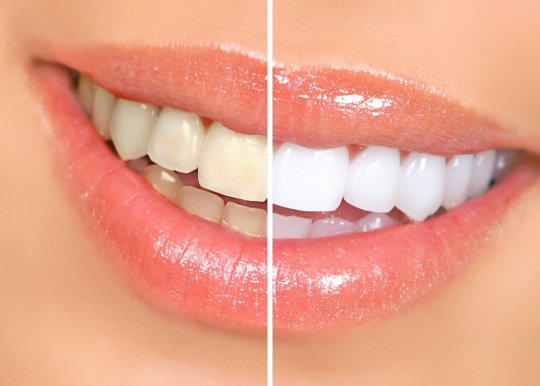
Did you know that the most commonly sought after cosmetic dental treatment is teeth whitening? Brushing and flossing daily to maintain a healthy smile might not be enough. You're not alone if you've noticed that your smile has lost some of its shine or has become a little yellower over time.
Do you want to brighten your smile? Get the facts first before making any decisions. Read the five most common reasons why our pearly whites lose their brightness.
Drinks and Food
The most common drinks that cause stains on your teeth are coffee, tea, and red wine. Why? It’s because color pigments, which are also known as chromogens, stick to the enamel.
Tobacco Usage /Smoking
Two chemicals found in tobacco, tar and nicotine, are responsible for stubborn stains on your teeth which will not go away unless you opt for tartar removal. Tar is naturally dark in color, and nicotine is colorless until it is mixed with oxygen, at which it becomes that persistent yellowish-surface-staining substance.
Age
Dentin is a soft area beneath your teeth's outer shell (enamel). Brushing wears away the outer enamel layer, exposing more of the yellowish dentin that is underneath.
Trauma
Dentin (which is a darker layer beneath the enamel) can surface as a result of an injury to your teeth. As such, if you have sustained damage to your teeth, you might see some discoloration.
Medications
Dental discoloration is a possible side effect of antihistamines, antipsychotics, blood pressure medications, and antibiotics. For example, tetracycline and doxycycline exposure can cause discoloration in the teeth of adults. Furthermore, teeth discoloration can also result from some kinds of cancer treatments, such as chemotherapy.
Is teeth whitening safe?
Teeth whitening involves the removal of stains from your pearly whites. By undergoing this procedure, your teeth will look brighter and whiter.
How does it work? There are two types of teeth whitening treatments to take note:
In-office treatments: In-office treatments usually take about one hour. These types of treatments can make your teeth whiter faster compared to DIY home treatments. Dentists might offer laser teeth whitening, which brings forth extremely fast and durable results. Because of their effectiveness, in-office treatments are more expensive than at-home treatments.
At-home treatments: At-home treatments are often done using teeth stain remover solutions which are widely available on the market.
While they are convenient, it is important to consult a doctor if you
notice abnormal side effects. If not tended to right away, it can cause sensitivity or damage.
Systems
Brightening your smile at home has never been easier. There are rinses, gels, chewing gum, toothpaste and whitening strips which can give you that glowing smile you’d always wanted. However, you should always consult your dentist before attempting any at-home treatments, especially if you have any of the following conditions:
Sensitive teeth
Restorative dentistry work done
A single dark tooth or a dark stain
Several crowns or fillings.
Whiteners typically contain:
Carbamide peroxide: This chemical breaks down hydrogen peroxide and urea. This is a common ingredient in various types of teeth whitening treatments. However, it can cause sensitivity if not used correctly or in the correct quantity. Consult your Maple Ridge dentist before trying to use whiteners which contain this ingredient.
Hydrogen Peroxide: This is another effective whitening and bleaching ingredient. However, as with carbamide peroxide, hydrogen peroxide can cause teeth and gum sensitivity.
Menthol: Menthol can cause an icy sensation in the mouth and gums.
Teeth Whitening at Home vs. at the Dental Office
Many people prefer at-home do-it-yourself treatments in-office treatments with their dentist. Before you make a decision regarding how you’d like to go about whitening your teeth, let's take a look at the pros and cons of each option.
Advantages of having your teeth whitened at the dental office:
The dentist can use quality treatments for faster results.
The dentist can use a lower concentration of the solutions used in teeth whitening to avoid sensitivity.
Disadvantages of having your teeth whitened at the dental office:
Teeth whitening procedures which take place in a dental office can be costly.
Advantages of having your teeth whitened at home:
Less expensive
Over-the-counter solutions are easy to acquire
Many different options available, such as rinses, gels, chewing gum (toothpaste), and whitening strips.
Disadvantages of having your teeth whitened at home:
Icy feeling
Teeth sensitivity
Longer time before you see results
Relief for sensitive teeth
Teeth and gum sensitivity is common for both at-home and in-office teeth whitening treatments. Luckily, there are over-the-counter teeth pain relief gels and toothpaste. Even without intervention, sensitivity often goes away after a week or two after the usage of these treatments.
Aftercare for Teeth Whitening
Aftercare starts with using fluoride toothpaste. As well, people who enjoy drinking coffee or iced tea might want to cut back because these drinks can cause your teeth to discolor once again. It is also ideal to avoid the use of nicotine, as it can also cause your teeth to turn yellow.
Is teeth whitening safe?
Yes, teeth whitening is both safe and effective when done correctly. It's best to ask a dentist before using in-office or at-home whitening products. To ensure that you get the results that you are looking for, you should have a discussion about advantages and disadvantages of different types of treatment options with your Maple Ridge dentist.
Teeth Polishing
Teeth polishing is when the dentist cleans your pearly whites with a unique instrument containing a small rubber tip with a special type of toothpaste. The dentist often does this to remove plaque and tartar. The teeth polishing treatment you get at the dental office is always more effective than what you would be able to achieve with teeth whitening products at home. After the polishing treatment, the shade of your stained whites turns from dark to light.
Teeth polishing treatments can cause a slight twinge of pain, but it is often very mild and lasts only a few seconds. Polishing is an excellent teeth stain remover treatment. It can be done every three months.
Takeaways Teeth whitening can be accomplished through many means. To remove surface stains from your teeth, one could simply utilize gentler approaches. Tooth whitening procedures provided by dentists are generally much more powerful than those of over-the-counter products. Dentists often use bleaching treatments, which are more effective in cases of severe tooth discoloration. It is also important to remember that teeth whitening products can be harmful if used excessively. Don't hesitate to ask your Maple Ridge dentist at Westgate Dental Center if you have any questions.
0 notes
Text
What Does Invisalign Do?
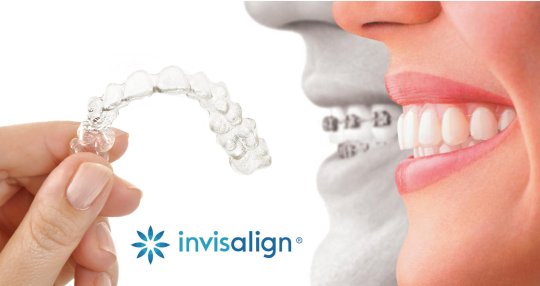
You may be hearing more about Invisalign, a dental treatment which is being used more and more as an alternative to braces. This is no surprise, since Invisalign is so discreet and effective. As well, since clear teeth aligners (like Invisalign) do not resemble traditional metal braces that have wires and brackets, they are perfect for anyone who was to straighten their teeth discreetly. Want to learn more about Invisalign? To make it easy for you, your Maple Ridge family dental clinic, Westgate Dental Center, has put together this easy-to-understand guide to help you get up to speed quickly. Read on below!
What is Invisalign?
First thing first - let's get to know more about Invisalign before you sink your teeth in it. Invisalign are teeth aligners and a type of invisible braces.
It is created out of plastic, based on impressions of your mouth. With consistent usage of the devices, your teeth will slowly shift into their proper positions. These teeth aligners work by applying constant pressure to specific areas of your mouth.
How do I get Invisalign?
For you to partake in Invisalign treatment, you should take the following steps:
Meet with your Maple Ridge Dentist.
Undergo an examination
Have impressions and photos taken of your mouth
Your orthodontist will submit the information which he or she acquires from the exam. Then, Invislagine will create a set of aligners that are specifically designed for your mouth. Your dentist will work with you to devise a treatment plan tailored to your specific needs and desires.
How long should you use Invisalign for?
This treatment uses a series of teeth aligner trays that are changed every one to two weeks. Each new tray is designed to continue shifting and moving your teeth until you get results that you are happy with.
You will need to wear your tray for most of the day (20–22 hours) in order to see results. But, you can easily remove them when you are eating, brushing, flossing, or during other special occasions. Just make sure that you put them back in once you're done!
Invisalign aligners are braces, not retainers because they actively move your teeth to reshape your mouth and jaw. Retainers just keep your teeth in place.
What are the Benefits of Using Invisalign Instead of Traditional Orthodontics?
Easy removal during meals and drinking: You can, and should, remove your aligners whenever you eat or drink. It means that you won't have to deal with the annoying food restrictions that come with traditional braces.
A more gentle approach to orthodontic treatment: the invisible aligners apply constant pressure to specific areas of your mouth and are designed to move them into their proper positions slowly
Easier to maintain good dental hygiene: Traditional braces can make it difficult to brush and floss your teeth, but removable aligners make it easier when it comes to cleaning. It's because you can just pop it out if you need to.
More subtle in appearance: You don't have to worry when taking pictures when you have Invisalign - they are barely noticeable. Plus, if you really wanted to, you can temporarily take them out.
Let us become your Maple Ridge Family Dentistry!
Westgate Dental Center is pleased to offer Invisalign treatment. We want you to experience the healthiest, straightest, and most attractive smile possible! If you’d like to learn more about Invisalign or any of our other services; please contact us right away to arrange a complimentary initial consultation. We can't wait to help you achieve the smile you've always wanted!
0 notes
Text
The Best Teeth Straightening Treatments for Crooked Teeth
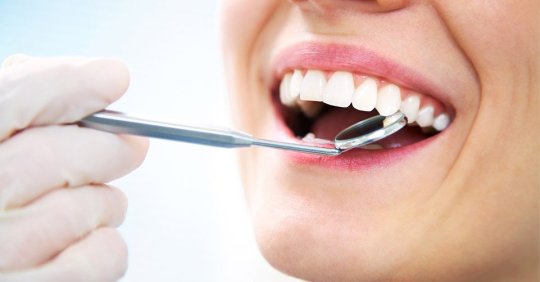
You might have misaligned or crowded teeth and are looking for a teeth straightening procedure. But with so many options out there, how would you know which one would be perfect for you? Well, you are in the right place. Read on below to learn about the common teeth straightening treatments available at your Maple Ridge Dental office.
1) Traditional Braces
Teeth straightening treatments which involve braces usually take up to 2 years because the teeth are moved little by little. With this type of procedure, you will have metal brackets glued onto your teeth. These brackets are connected with wires which twist, thus causing the teeth to move into proper alignment gradually. Teeth straightening treatments involving braces can require a lot of effort and time. Also, since traditional braces utilize wires and metal brackets, patients could experience scratches within their mouths at some point of their treatment. Furthermore, metal braces might damage your teeth, so patients always undergo teeth scaling at the end of the treatment. While there are many things to consider, the results of braces are undeniable.
2) Invisalign
Invisalign is a type of long-term teeth adjustment treatment that does not involve wires nor brackets. With this type of procedure, teeth move gradually, just as they would with traditional braces. Many individuals opt for Invisalign because the aligners could be taken out during meals and cleaning, which makes upkeep quite simple. As well, with Invisalign, the frames are almost invisible once installed, so people will not notice that you are undergoing the treatment process. The length of time necessary to see results from Invisalign is dependent on how slow or fast your teeth move. On average, the procedure takes about two years. Invisalign is safe on the tooth enamel, but there might be some discomfort when installing them. Not to worry, this discomfort can usually be avoided if your dentist performs a dental cleaning prior.
3) Clear Braces
Clear braces are similar to traditional braces, but instead of metal brackets, transparent, almost invisible brackets are utilized. This discrete treatment allows patients to have a beautiful, perfect smile during the entire process. Clear braces are long-term and can take years before the patient gets their desired results because it moves teeth slowly. As with traditional braces, patients will have to be diligent about keeping their oral hygiene in tip-top shape. Otherwise, all their efforts will go to waste if their teeth are ridden with cavities.
Now that you have decided on which teeth straightening treatment you’d like to undergo, what are the steps that you need to take to get started? Read on below!
4) Consultation with your Maple Ridge dentist:
During a consultation with your dentist, your dentist will study your dental structure and history. They will then discuss all the options you have for your treatment, depending on the seriousness of your crooked teeth. They will provide you with their professional opinion with regards to which treatment you should opt for, and be able to answer any questions which you might have. Once you’ve decided on a particular treatment, your dentist will explain the procedure with you, including what you should expect throughout the entire process.
5) Preparation:
Metal Braces: Prior to the installation of your metal braces, your dentist will perform a Dental cleaning for you. The installation of metal braces will take about two hours. Following the installation procedure, it is not uncommon to feel discomfort. This is because by tightening the wires which are connected to the metal brackets, your braces are already moving your teeth. As a matter of fact, you will feel some discomfort every time your braces are adjusted, which happens approximately once per month.
Invisalign: In order for Invisalign (the company) to provide you with your custom-made aligners, your dentist will first take photos and videos of your teeth, as well as create an impression of them. He or she will then send all this in, and you should receive your aligners within a month or so. Your dentist will then work with you to determine when you will need to switch out your aligners.
How much does teeth straightening treatments cost?
The cost of teeth straightening treatments in the Lower Mainland, including Maple Ridge, depends on:
The patient's goals
The complexity of the case
The work and time required
Adults, teenagers, and children all benefit from braces in the same way. Your dentist or orthodontist (a dentist who specializes solely in orthodontic treatment) will be able to find the perfect teeth straightening treatment for Keep in mind that compared to orthodontists, general dentists are less expensive.
Crooked teeth can be a pain when eating, speaking, or laughing. Now that you know the best teeth straightening treatments around, what are you waiting for? Call Westgate Dental Centre today and schedule an appointment with our Maple Ridge dentist get started!
0 notes
Text
How to Treat an Infected Wisdom Tooth
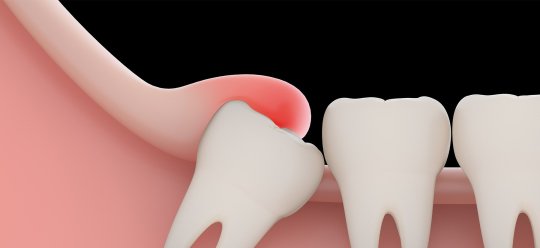
Getting an infected wisdom tooth is more common than you think. Also called your third molars, these are the large teeth at the back of your mouth. They are also the last ones to grow in. As a matter of fact, most people get these molars between the ages of 17 and 25.
The most common causes of an infected wisdom tooth include:
Not brushing or flossing teeth properly.
Inconsistent dental checkups and dental cleanings.
Poor diet that contains lots of sugary snacks and drinks.
Grinding or clenching teeth.
Having wisdom tooth partially erupted (stick out of the gum), making it more likely to get contaminated.
Main symptoms to watch out for:
Swelling
Redness
Pain in the gums near the infected wisdom tooth.
Fever
Lousy tasting or foul-smelling breath that doesn't go away after brushing
What treatment can you get:
If you think your infected wisdom tooth is caused by a cavity, or if your wisdom tooth hurts when you eat, you should call your dentist immediately. If there is a cavity, your dentist can take care of it and prevent it from getting worse.
If your wisdom tooth has been infected and damaged, you might need to get wisdom teeth removal surgery. By undergoing this procedure, you will be able to halt the infection and pain, and also prevent further damage to your other teeth. As a preventative measure, you can also remove infected wisdom teeth that aren't causing pain or other problems.
Wisdom Tooth Removal can be performed by your trusted Maple Ridge dentist. If the infection isn’t too dire, your dentist might first try treating the condition with antibiotics to see if inflammation subsides. If the antibiotics have no effect on the infection, then your dentist will probably recommend that you get your wisdom tooth removed.
What to do after wisdom teeth removal
The best way to ensure speedy recovery from wisdom teeth removal surgery is to be diligent in following guidelines listing the foods you can and cannot eat after the infected wisdom tooth is removed. As well, maintaining good oral hygiene is essential while recovering from wisdom teeth removal surgery. The following are some important things that you can do to take care of your oral hygiene following a wisdom tooth removal.
Do not eat any solid food until your dentist says it's okay to do so.
USe a straw when drinking liquids
If you have been prescribed antibiotics, ensure that you take them as directed.
Clean your teeth as directed by your dentist.
Removing the infected wisdom tooth can prevent bone damage in your upper back teeth (the ones next to your third molars). When an individual’s wisdom tooth becomes infected, it can cause one side of their upper cheek area to swell. If you ever notice this symptom, make sure to contact your dentist as soon as possible.
How to avoid an infected wisdom tooth
Prevention is always better than cure. To avoid getting an infection in your wisdom tooth, you should follow good dental habits. As well, be knowledgeable about the signs and symptoms of third molar issues. Call and contact an appointment with your dentist if you suspect that you might have an infection.
It can be expensive to get your wisdom tooth removed, but, if you compare this to how much it would cost to get an infected wisdom tooth removed in the future (when you get older), it might be worth getting it done now, as a preventative measure.
What Westgate Dental Centre can do for you
If you have any dental health questions, please feel free to contact us. We would be more than happy to help! Thanks for reading this article about infected wisdom teeth. If you are looking for dental services such as dental cleaning, Invisalign, wisdom teeth removal, and more, you can visit us at Westgate Dental Centre, in Maple Ridge, British Columbia, or give us a call.
0 notes
Text
What are the Different Types of Teeth Cleaning?
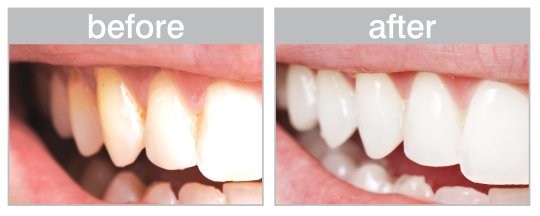
Not sure if you need to go for a teeth cleaning? If so, then read this.
Teeth are the only organ in our body that cannot take care of itself nor maintain its own health. They need outside maintenance, and while you can brush, rinse,and floss in the comfort of your own home, it is best to go to a dentist regularly as well. It's important to know the differences between the different types of dental cleaning procedures which are available. That way, you can pick the one that's right for you. You should also discuss your options with your dentist to understand more about each of them.
Different Types of Teeth Cleaning Procedures
Teeth scaling and root planing are the most common types of teeth cleaning procedures, while gross debridement is the least common. There are many different ways to clean your pearly whites, but they all accomplish the same goals: ensure the health of your gums and teeth, and teeth whitening. Read on below to find out about the most common types of teeth cleaning procedures available.
Routine Cleaning or Prophylaxis
Your Maple Ridge dentist will perform routine cleaning (also known as prophylaxis) on healthy patients who simply need to maintain their oral health as part of a preventative strategy. When it comes to prophylaxis, dental hygienists are typically responsible for plaque removal, which involves the eradication of bacteria that has accumulated on the surface of your teeth. Prophylaxis can also act as a teeth stain remover, whereby any surface discoloration which is present on your teeth would be minimized. Even though prophylaxis can't be used on severely damaged teeth, it's an excellent dental cleaning procedure to keep your choppers in tip-top shape.
Most dentists recommend a prophylaxis treatment every six months to prevent plaque from forming.
Teeth Scaling and Root Planing
Teeth Scaling and Root Planing are also known as deep cleaning teeth. They are typically the only options available for patients who are at high risk of developing gum disease or who have already developed a variation of it.
If plaque removal is not done regularly, a buildup of tartar can form. This increases your chances of getting gum disease and other serious oral health problems. When this happens, teeth scaling and root planing procedures are required in the removal of tartar.
Most patients undergo teeth scaling and root planing because they have symptoms of gum diseases, which include:
bleeding gums
swollen gums
loose teeth
Full Mouth Debridement
Full Mouth Debridement debridement is essentially a thorough deep cleaning teeth procedure. It is used to remove severe plaque buildup and periodontal diseases. Since the purpose of this treatment is to address serious dental conditions, it typically takes longer than a routine teeth cleaning.
Patients who have not visited their dental hygienist in over a year are more likely to require a full mouth debridement termement.
Other procedures for you to note:
Ultrasonic Dental Cleaning
Ultrasonic dental cleaning procedures utilized ultrasonic waves to brush or scrub teeth surfaces for tartar removal. During this procedure, it is not only your pearly whites which get cleaned, but also your lips and gums. While this treatment might be a bit more expensive than a regular teeth cleaning, it is very effective in preventing tooth decay and gum diseases.
Air Abrasive Teeth Cleaning
In an air abrasive teeth cleaning procedure, air pressure is utilized to remove tartar buildup. This procedure is completely painless and also quite effective in leaving your mouth clean and feeling fresh.
Still not sure about which teeth cleaning treatment you should opt for? Not to worry. Your Maple Ridge Dentist can examine your teeth and help you decide which procedure would be ideal for your current condition.
What are the benefits of teeth cleaning?
There are countless benefits to teeth cleaning. They include:
Prevention of tooth decay
Prevention of gum diseases
Prevention of oral infections
Getting rid of foul odors or bad breath
Condition and size of your mouth
The type of procedure you are undergoing
Amount of polishing required
Before you commit to a specific teeth cleaning procedure, make sure to shop around and compare prices. Also, if you have insurance coverage, check to see if your dentist accepts the insurance plan that you are under. Having your procedure paid by your insurance company (even if it is only a percentage), can save you quite a bit of money.
Last Words To Chew On
Teeth cleaning should be done regularly. Plus, the more you know about the different procedures, the better you are able to choose the ideal treatment for you. If you are unsure about which treatment you should undergo, your dentist will be able to steer you in the right direction. For more dental hygiene tips and dental advice, visit Westgate Dental Centre today! Your oral health is essential. Call us today to book an appointment!
0 notes
Text
Are You Undergoing Wisdom Teeth Removal? If So, Read This first.
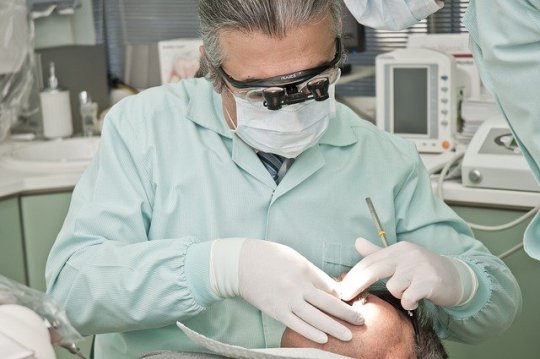
What is Wisdom Teeth Removal?
Wisdom teeth removal involves the process of surgically extracting one or more of an individual's four hindmost molars. Most people have four molars in the back of their mouth, two on the top and two on the bottom. Their removal should be done as soon, since they often become challenging to clean, and they tend to crowd pre-existing teeth. Ultimately, both of these scenarios can cause infections and pain in the future.
Is wisdom teeth removal necessary?
An impacted wisdom tooth must be removed as soon as possible, especially when it turns into an infected wisdom tooth and when they cause pain and discomfort. They will be hard for an individual to clean and tend to, because they're hidden too far back in the mouth. Hence, the best way to deal with them is to consult a doctor, who will most likely recommend that you get them removed.
The most common reasons why your Maple Ridge Dentist will recommend wisdom teeth removal:
Pain
Regularly infected soft tissue behind the lower last tooth
Sustained trauma after an accident
Sacs filled with fluid (cysts)
Tumors
Damaged tissue surrounding teeth
Existence of gum disease
Tooth decay has spread throughout the mouth
You cannot determine whether or not wisdom teeth extraction is necessary without consulting a dentist or an oral surgeon. Hence, it is always best to visit your dental office when you feel that your wisdom teeth are interfering with your everyday life.
Early evaluations are critical for determining the health of your hindmost molars because they typically erupt by the age of 21. Regular dental checkups are also necessary even after wisdom teeth removal, to ensure that other potential problems are caught before they become more serious.
It is not always the case that an erupted wisdom tooth must be removed. Some scenarios where intervention might not be necessary include:
When the wisdom tooth erupted without any issues or difficulties.
When the wisdom tooth partially erupted, you don’t have any issues with chewing or swallowing.
While there are scenarios in which removal might not be necessary, dentists should still keep an eye on the situation.
If wisdom teeth removal is necessary, preparation should include the following steps:
Proper evaluation (including x-rays): wisdom teeth removal should never be performed without prior appropriate examination by a professional dentist. The only exception to this would be if the tooth has become infected or is causing damage to the surrounding teeth. Then, an emergency wisdom tooth removal would be necessary.
Taking antibiotics before the teeth removal (if necessary): there are instances when the infection is extremely severe. In such instances, you must take antibiotics until the infection subsides before the tooth is extracted.
Advantages of wisdom teeth removal:
The toxins from an infected wisdom tooth are removed.
Damage to the neighboring healthy teeth is prevented.
Eliminates potential pain and swelling.
Lowers the risk of tooth decay.
Prevents gum disease.
How much does it cost?
The cost of wisdom teeth removal varies greatly from dentist to dentist. Your dentist can provide you with an estimate of costs. Many factors could influence the price of a wisdom teeth removal procedure. They include:
The clinic's location
Difficulty of surgery
Surgeon's fees
Anesthesia fees
Follow-up visits
Since there are so many variables involved in determining the cost of wisdom teeth removal procedure, it is best to get an estimate from your dentist before moving forward with the procedure.
Are wisdom teeth extractions painful?
There are a variety of ways to remove wisdom teeth. If your wisdom teeth are partially exposed, you will most likely undergo what is known as a This is "distraction" procedure. During this procedure, incisions are made in your gums, whereby your wisdom teeth are exposed before they are removed completely. A dental elevator is inserted between each wisdom tooth and the bone during this procedure. They are gently removed from the sockets in your gums by a rotating device that separates them from the bone. While this might sound painful, rest assured that you will be under local anesthetic. You can also opt to be under general anesthetic for the procedure.
Expect that there will be some pain and discomfort for the first few days after wisdom teeth removal, but painkillers can help alleviate this.
We recommend a wisdom tooth evaluation with your Maple Ridge Dentist in this situation. Just visit https://westgatedentalcentre.com, our Maple Ridge, British Columbia dentist website if you have any questions about other treatments.
0 notes
Text
How Cosmetic Dentistry differs From General Dentistry
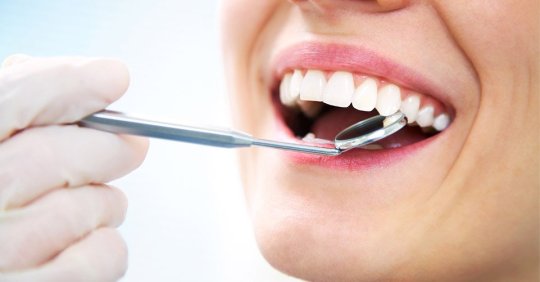
General dentistry covers an amazing array of procedures and services, all with a single goal: To help you maintain your beautiful teeth for as long as possible, make sure that your oral health is maintained, and keep you feeling and looking great during every day life. Of course, maintaining good oral health is not just about preventative care; brushing, flossing, and regular dentist visits are essential. But there are many more specialty procedures that can be done in the office or in the dental clinic. Extractions, for example, are one of the most common and important type of procedures performed today. So if you're looking for a good dentist who does them well, here are some tips to help you find that dentist.
Find a family dentist. This person is typically referred to as the "biggest" practitioner of the dental practice. This means that he or she takes care of a wide variety of patients, especially those who don't have any nearby dental offices. It's important to have your general dentistry done through a family dentist, even if you have dental insurance, so that your treatment will be covered if anything should go wrong. Your family dentist is your first line of defense in oral health care.
Learn about the different types of procedures offered. There are several types of general dentistry procedures, from basic to advanced. Each type of procedure has specific advantages or disadvantages. For example, basic dental procedures like cleaning, plaque removal, crowns and bridges, are done to prevent disease, such as gingivitis, from developing on your natural teeth. Advanced procedures, on the other hand, are usually done for cosmetic reasons, such as to improve the appearance of your smile, or to correct the problems with your teeth.
Gum disease may also require treatment, such as periodontal disease. Your periodontist can help you find the best way to treat your gum disease, either through preventative measures or invasive procedures, depending on its severity. One common procedure performed by your periodontist is dental implants. With dental implants, you can replace one or more missing teeth with a prosthetic tooth.
Most people need at least one oral cavity in their mouth, which is where all of the teeth in the mouth come together. To get this dental cavity to be healthy, your general dentist will perform a number of procedures designed to strengthen your oral cavity. Some of these oral cavity strengthening procedures include tooth extraction, tooth pinning, laminectomy, and gum graft. Your general dentistry services can also include dental implants, which are artificial teeth that are placed into the bone of the jaw instead of being placed into your natural mouth.
Next, check out your regular dental visits for symptoms of oral cancer. Oral cancer is not very common, but it can be a very serious condition that requires special attention. Symptoms to look for include bleeding gums, swollen lymph nodes in the neck or upper back, painful tooth, and a loss of appetite. If you experience any of these symptoms, contact your periodontist immediately. Other oral cancers include basal cell carcinoma (which develops from cells in the gums) and squamous cell carcinoma (which develops from cancerous cells that typically form in the mouth).
Before you enroll in a dental medicine program, it's important to see if your general dentist is a part of a dental school network. Often, the dentists that work with the network have received additional training after graduating from dental school. Networks allow dentists to work with students from different medical specialties. In turn, students receive extra training relative to the experience they have received from their teachers.
Once you find a dentist you want to practice with and make an appointment, you'll need to discuss payment plans and future cosmetic procedures. Many cosmetic dentists offer payment plans that will work for your budget; however you should always check the financial standings of your dentist before signing up. Some dentists prefer to work exclusively with their patients, while others work with both patients and cosmetic dentists.
0 notes
Text
Dental Care Tips and Information
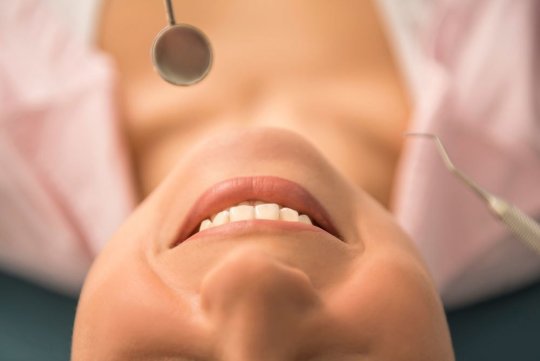
Dentistry is a part of oral care. The dentist plays an important role in a person's life by providing preventative services, such as cleaning teeth and diagnosing oral problems. Proper oral hygiene is important for maintaining proper dental health. Dentists are highly trained professionals that can help make your mouth feel better by cleaning your teeth and improving oral health.
Throughout Syosset, NJ, dentists offer comprehensive dental checkups and treatments to patients. People who visit the offices of Syosset Dentistry in Syosset, NJ are often amazed at the high quality of service they receive. People who consider cosmetic dentistry believe that preventative maintenance is important for remaining in good oral health regardless of age.
Regular visits to your Dentist include: routine dental cleaning and x-rays, tooth brushing, and fluoride treatment. Cleanings can be done monthly or during any time of the day you feel the need. X-rays are used to detect any cavity or disease that may not be visible on standard dental cleaning. Brushing your teeth twice per day and flossing daily will help maintain good oral health, but sometimes, flossing is not enough. Toothbrushes can remove plaque and bacteria, but sometimes the brush can loosen or chip teeth, which makes it necessary for a thorough cleaning.
In most cases, dentistry procedures are performed by a specially trained professional. These dentists have undergone additional training from their previous dental school or dental college. Most dentists use an anesthesia system during the procedures to help ensure that there are no nerves damaged during the cleaning process. Dentists who go through any additional training receive a certification from their local board of dentistry that verifies that they have received additional training.
It is important to choose a dentist that will perform your dental cleanings accurately. If you have any questions regarding the accuracy of a particular procedure or a particular method, you should ask your dentist. If a dentist tries to rush you through your teeth cleaning or enamel repair, then you might find yourself not having the best treatment or the best results. You need to have confidence in your dentist that he or she has what it takes to do the best dental cleanings for you.
Dentists can perform many different procedures, but most of them deal with tooth decay, gum disease, tooth loss, and oral health. Many times, oral health specialists like periodontists, orthodontists, and general dentists treat patients for dental problems. A regular cleaning, examination, x-rays, and root can help prevent the onset of diseases such as cavities or gum disease. There are several types of treatments that a dentist can give for you, such as braces, sedation dentistry, laser dentistry, and tooth whitening. These treatments are all preventative dentistry and they help you keep your mouth healthy by preventing tooth decay and tartar.
Dental specialists can also help people that have been injured from a car accident. Some dentists use dental braces to help with the problem of car accident injury. The dentist can also prescribe a pain killer for someone that has been severely injured and has suffered from gum disease. In most cases, it is important to get this type of treatment from a specialist and not regular dentists.
Finally, some dentists use the procedure of prophylaxis dental cleaning. This procedure involves removing tartar from the teeth and gums. After this is done, your dentist will use a process called scaling in order to remove tartar on your teeth. Your teeth and gums will look healthier and nicer after your dentist does a prophylaxis dental cleaning procedure.
Dentists can help stop tooth decay and other types of dental problems by doing dental cleanings on a regular basis. It is important to brush your teeth three times a day. In addition, you should floss on a daily basis in order to make sure that you are removing bacteria from between your teeth.
However, it does not matter how often you brush your teeth if you do not replace the toothpaste that you use. Using the right type of toothpaste is very important. There are many brands available today that are made especially for individuals that have trouble brushing regularly. Using these toothpastes will help to ensure that your teeth and mouth are clean and bacteria free. In addition, regular visits to the dentist for cleanings will help to keep your smile looking bright and beautiful.
If you are interested in having a healthy smile, you should consider getting a few visits per year for a professional cleaning and/or scaling. Scaling is used to remove plaque build up from between your teeth. Plaque can be removed with the help of a dental scaling instrument. This type of tool allows dentists to safely scale your teeth so that it is less likely for you to need any type of restorative procedure. Visit your dentist regularly to learn more about routine dental cleaning and/or scaling.
0 notes
Text
Which Kind of Dentist is Right for You

General dentistry encompasses the entire field of medical science that deals with the overall health of the teeth, gums, and mouth. This is especially helpful in children as they are more prone to tooth decay than adults. Early intervention can prevent the serious condition from progressing to more serious conditions that can ultimately lead to tooth loss and dental failure. For this reason, general dentistry is usually recommended for all children during their checkups and before they leave home for school. Below are some examples of how every child can benefit from regular checkups.
Audience. Even young toddlers can benefit from an appointment at the general dentist's office for basic checkups to become familiar with the location where all other important dental services are to be done throughout childhood and into adulthood. Every phase of life brings with it specific oral care concerns, and your general dentist is trained specifically to deal with each one. Your child's pediatric dentist will treat cavities and birth defects, while your family dentists can advise you about mouth wash or fluoride use.
o Children's health. Children's dentistry covers all areas of oral health care from infancy through adolescence. Treatment includes root canal procedures, dental x-rays, fillings, crowns, bridges, and orthodontics. If a child has a visible problem, you should schedule an appointment as soon as possible to discuss what your child can do to avoid costly treatment or complications later on. x-rays can also detect problems that may go unnoticed with routine dental visits, like submucous nodules.
o Teenage and children's dentistry. Teens have several different concerns besides basic cleanings and cavity removal. They might have their own aesthetic concerns or they might want to change their teeth color or straighten their smiles. Cosmetic dentistry can address these issues, by retouching, filling in "inferior" teeth, sculpting, whitening, or plastic surgery. If your teen needs braces, you should schedule an initial visit with your general dentist to discuss the options. In some cases, braces will be necessary for the prevention of future oral cavity problems; therefore, you and your teen should also discuss which procedures might be best for your goals.
o Forensic restorative. Forensic dentistry deals with estimating the value of a missing tooth or teeth to establish guilt of someone. An example would be if your spouse is suspected of committing adultery and missing some teeth. Dentists who specialize in forensic restorations may use dental records, X-rays, and other data to construct a profile of the accused. Forensic restorations are among the most popular elective procedures that students pursue in a dental education program, because they allow students to pursue an interest in something they may not otherwise pursue, such as crime scene investigation.
o Cosmetic dentistry procedures include tooth whitening, crowns, bridges, veneers, bonding, lumineers, teeth bleaching, and more. Many elective cosmetic procedures can make a huge impact on your smile, but many are elective because they do not affect the function of your teeth. You and your teen should discuss which of these procedures might be appropriate for your goals. Examples of some cosmetic procedures include botox and dermal fillers. Your dentist can explain the benefits and risks of each procedure and help you choose which one is right for you.
o Family dentistry. Teens often seek the advice of a family dentist as well. A family dentist has been trained to deal with the issues of both young and older adults. Your general dentist can help you decide which family dentistry professional would be right for the job based on experience, preferred style, and preferred medications. If you have a preferred dentist, you should take the time to find out how your dentist has reviewed your oral health records, whether he has recommended any procedures you should consider, and whether you feel comfortable with him.
All of these procedures, while not essential to all oral procedures, are important to consider if you have specific needs. You and your dentist can work together to determine what those needs are so that you get the best care possible. Your goals for having a healthy, functional smile are just as valid as those of your friends or family members. General dentistry includes all areas of the dentistry field, including operative dentistry, periodontal, prosthodontic, oral surgery, cosmetic dentistry, braces, sedation dentistry, and more. Each of these areas has specific procedures that are associated with it, so you should spend some time exploring them before making a final choice.
0 notes
Text
Things You Should Know Before Undergoing Surgery for Wisdom Tooth Removal
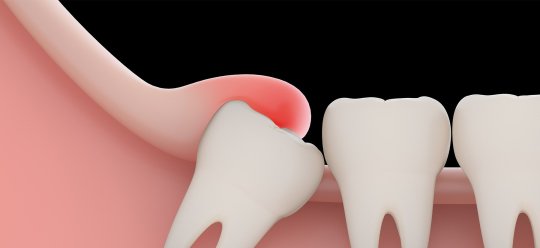
Wisdom teeth extraction is a rite of passage for many young people. It is often a person's first surgery and one of the more frequently performed operations, for many people. This being said, no matter how resilient and tough you are, you will need to be careful and ensure the right steps are followed to get you back to normal, as quickly as possible.
If you are among the unfortunate majority that require wisdom tooth removal- within their lifetime, there are a few factors you should consider.
1. What Is Wisdom Teeth Removal?
A wisdom teeth removal is a surgical operation in which wisdom molars are removed. Wisdom molars are the four permanent teeth located at the top and bottom rear corners of your mouth. If a wisdom tooth does not have enough space to develop, it can cause pain, discomfort, infection, or other dental issues, and will eventually need to be extracted.
A wisdom teeth extraction can be performed by either an oral surgeon or a dentist. Even if your wisdom teeth are not currently causing any difficulties, some oral surgeons and dentists recommend wisdom tooth surgery to avoid potential future complications.
2. Who Needs to Have Their Wisdom Teeth Removed?
Is it necessary to get my wisdom teeth extracted? This is a very common question that many individuals have. Your dentist might have recommended that you have your wisdom teeth removed. However, they aren’t bothering you - so why take them out?
Even though your wisdom teeth aren't bothering you, it doesn’t imply that there is nothing wrong with them. The teeth could be impacted or trapped, meaning that they cannot get past your jawline and into your mouth. Perhaps your mouth is too tiny to accommodate them, or the teeth are developing at an angle to other teeth. If they press up against the tooth next door, there is a potential for damage.
If you have an impacted wisdom tooth and have the following concerns, you will need to get it extracted as soon as possible:
Pain and swelling in the jaw
Debris and foods regularly being trapped behind the tooth
Infection or periodontal disease ( gum disease )
Tooth rot
A fluid-filled sac or cyst around tooth
Complications with various teeth straightening orthodontic procedures
3. What Are the Advantages of Having Your Wisdom Teeth Extraction?
If wisdom molars cannot emerge into place, they can often cause a variety of oral health problems. There are many advantages to removing wisdom teeth. That is why dentists always promote wisdom teeth extraction.
Lower Risk of Oral Disease
Retaining your wisdom teeth puts you at a higher risk for dental decay and gum disease. These conditions may lead to more serious infections and pain. In severe cases, they might cause problems such as gum recession and bone loss. The sooner you have your wisdom teeth extracted, the less likely you will have to endure any associated implications.
Orofacial Pain Relief or Prevention
Orofacial discomfort is another issue which individuals often experience when they retain their wisdom teeth. This discomfort they feel in their mouth and face is caused by wisdom-teeth related complications, such as tooth decay, gum disease, and dental crowding. Without a doubt, when you keep your wisdom molars, there is a high chance that your quality of life will suffer.
Reduce Headaches
If wisdom teeth are not removed early enough, they can emerge through the gums in early adulthood, a time when the rest of an individual’s teeth are already well-established in the jaw and gums. Since the teeth are already completely and solidly in place, any teeth movement will lead to headaches. Wisdom molar removal may reduce the frequency of headaches because they will no longer push against the preexisting teeth.
4. What Is the Recovery Time for a Wisdom Tooth Removal Procedure?
One of the most frequently performed dental procedures is wisdom teeth removal. It may take up to two weeks to completely recuperate after wisdom tooth extraction. Taking appropriate care of the wound will assist the patient in his or her healing process.
Everyone's healing process can look different. However, in general, the recovery can be broken down into the following stages:
Blood clots will form within the first 24 hours
Swelling of the lips and cheeks should subside in two-three days
After seven days, any remaining sutures can be removed by a dentist
Jaw stiffness and discomfort should subside in seven to ten days
Any minor bruising on the face should dissipate in two weeks
Recovery after a wisdom teeth operation will be gradual, but patients should see some progress every day.
5. Why Is It Important to See a Dentist Regularly, Even if You Don't Need Any Work Done Yet?
Dental visits should not just be scheduled when there is a condition that needs to be treated. Preventive measures are always preferable to remedial treatments. There are also various other reasons why it is essential to visit your dentist on a regular basis:
Dental Hygienists
Dental hygienists and therapists can work together with your dentist to help you maintain your oral health.
Tooth Whitening Consultations
Tooth whitening has increased in popularity, but many misconceptions may lead to uncertainty about its safety. The dental office is one of the only locations where you can safely have your teeth professionally whitened.
Dentists Can Offer Help and Advice Specific to Your Needs
When individuals have a problem, they often turn to the internet, which has a wealth of helpful information - and disinformation. Your dentist, who has years of education and experience, can provide you with an accurate assessment and information regarding your specific issues.
Final Thought
It can be daunting to decide whether to get your wisdom teeth removed. The best advice is to consult with a dentist or oral surgeon about your individual risks and benefits to having them removed. This allows you to make an informed decision which could impact your long-term oral health.
0 notes
Text
How to Choose a Teeth Whitening Procedure that Meets Your Needs

Who loves a gleaming white smile? Scientifically, everyone! Numerous studies have proven that individuals find that a white set of teeth makes an individual appear more attractive. Unfortunately, teeth lose their shine and brilliance over time. A gorgeous smile can fade as the enamel deteriorates. Not to worry, there are many teeth whitening dental treatments nowadays. What are you waiting for?
With so many teeth whitening procedures to choose from, it can be daunting to decide on the perfect one. After all, you want to ensure that your money is well-spent, and that your teeth are well-taken care of. To help you narrow down your choices, we have compiled the following information. Read on!
1. Dentist-Supervised Teeth Whitening
Dentist-supervised teeth whitening entails the controlled application of hydrogen peroxide or carbamide to the teeth of a patient. These chemicals will penetrate the enamel and alter the color of the dentine underneath. Depending on the services of your dentist, he or she may either perform this teeth whitening procedure in-office or at-home. Before beginning the treatment, your dentist will check your gums, clean your teeth, and repair any cavities.
With their skills and knowledge, an experienced dentist can help you determine whether you should partake in teeth whitening treatments, as well as whether they would be beneficial to you. This is because there are several dental-related factors which would decrease the effectiveness of teeth whitening procedures. For instance, patients with tooth decay, infected gums, white patches on their teeth, and numerous tooth-colored filling or crowns on their front teeth may not be suitable candidates for tooth whitening procedures.
2. Side Effects of Teeth Whitening Services
Professional teeth whitening is a risk-free treatment. While the majority of individuals have no negative effects, some may experience:
Tooth Sensitivity - Due to the exposure of the dentin layer during the whitening procedure, your teeth may become sensitive for a brief time. To alleviate the discomfort, your dentist may prescribe moderate pain medication and a tooth conditioner.
Soft Tissue Irritation - An irritation may occur if the gum tissue is inadvertently exposed to the whitening solution during the whitening procedure. Your gums will look white but will quickly revert to normal.
3. In-Office Treatments for Tooth Sensitivity and Cavities
Over-the-counter treatments or teeth whitening at home often induce tooth sensitivity, resulting in discomfort and suffering. In-office whitening treatments are excellent and highly recommended alternatives. In-office treatments are overseen by an industry expert, making them safer than over-the-counter remedies. There are two types of in-office treatments:
In-Office Laser Teeth Whitening
If you have persistent stains on your teeth that do not react well to conventional whitening methods, your dentist may suggest laser teeth whitening. Laser Teeth Whitening is an in-office procedure that takes advantage of the current advances in technology. In this type of treatment, once the teeth whitening agent has been applied to the patient's teeth, it is quickly heated with a laser. This is a quick and effective way to whiten one’s teeth.
In-Office Deep Bleaching
In-office bleaching treatments can give you a significantly whiter smile after only one visit. This means that rather than having to wait weeks or more for the brighter smile that you want, you can get same day results right away.
4. Cosmetic Dentistry Procedures, Including Veneers and Dental Implants
Cosmetic dentistry refers to a variety of professional treatments aimed at improving the aesthetics of one’s teeth. Several of these procedures also have restorative advantages, and can repair certain dental abnormalities.
During the tooth whitening process, teeth are carefully cleaned to remove any plaque, tartar, and food particles from the crevices of the teeth. Cosmetic dentists may also employ teeth bleaching chemicals for tooth whitening, depending on the amount of discoloration present.
Dental Veneers
Dental veneers are lean, customized shells composed of dental composite or porcelain that are used to overlay the front teeth. The ultra-thin shells conceal any apparent defects in the teeth' size, color, form, or length. Dental veneers are expected to last for 20 years without staining.
Dental Implants
Dental implants are artificial tooth roots used to replace natural tooth roots. An implant provides a solid foundation for either removable or permanent replacement teeth that are custom-made to complement your original teeth. Dental implants need the same care as natural teeth, such as brushing, flossing and mouth washing. Of course, it is also necessary to see the dentist regularly.
5. Dental Bridges to Replace Missing Teeth
If you have missing teeth, your dentist may use dental bridges to cover — or bridge — the gaps in your smile. A dental bridge is an artificial tooth kept in place by abutment teeth on each side of the gap. These artificial teeth may be constructed of several materials, including gold, although they are usually made of porcelain to fit in with your natural teeth.
Dental Bridges Are Classified Into Three Types:
Traditional Dental Bridge
Traditional dental bridges consist of a filler tooth which is held in place by dental crowns. These crowns are put over the healthy teeth on either side of the gap in the mouth. These types of dental bridges are composed of porcelain which has been fused to metals or ceramics. Before placing the bridge, each tooth needs to be reshaped and fitted with crowns to assure they are strong enough to hold the bridge.
Cantilever Dental Bridge
A cantilever dental bridge is similar to a traditional bridge. They can be utilized when there’s no tooth on one side of the missing tooth. This allows one side of the bridge to be supported by a healthy tooth and crown.
Maryland Dental Bridge
A Maryland dental bridge is a permanent dental repair solution used to replace missing teeth. The process involved is similar to that of a traditional dental bridge. However, there is one significant distinction to be aware of: Maryland bridges are bonded differently.
Takeaway
Having a white smile can have far-reaching benefits that go beyond your oral health. Being able to grin confidently with white teeth can boost one's self-esteem and mental well-being. When you do decide to whiten your teeth, make sure to choose the best teeth whitening products or services, such that you can get the best results.
0 notes
Text
Everything You Need to Know About Dental Scaling

Plaque and tartar buildup is unavoidable regardless of how well you take care of your teeth. Bacteria colonies develop in our mouths every time we eat or drink. Although brushing, flossing, and using mouthwash are efficient methods for removing these contaminants, they can still persist.
Do you feel self-conscious whenever you smile? Are you constantly trying to avoid smiling with your teeth because of visible plaque? Teeth scaling is the most effective procedure for achieving a picture-perfect smile. In this article, we will examine different teeth cleaning methods and why they are vital for everyone.
1. What Is Dental Scaling?
Dental scaling is the most frequently used nonsurgical treatment for gum disease. It can be performed by both dentists or periodontists. If your condition is mild, these professionals may suggest scaling to treat and prevent it from worsening. However, if you have a serious periodontal condition, you may require gum surgery. Prior to the surgery, your dentist and periodontist may complete a scale and root planing treatment and complete teeth cleaning before the surgery.
There are two types of scaling tools which are often used by dentists, hygeniensets, and periodontists:
Hand-Held Scaling Equipment
Your dentist or periodontist may use a dental scaler and curette to remove plaque from your teeth. Since the dental hygienists and dentists cannot see the plaque, they depend on touch to detect areas of tartar accumulation and rough spots.
Ultrasonic Scaling Instruments
An ultrasonic scaling has a vibrating metal tip which is used to scrape off tartar. The use of a water spray is also enlisted, in order to cleanse away the debris and to keep the tip of the scaling tool cool.
2. Is It Essential to Scale Your Teeth?
Yes! It is essential to scale your teeth regularly. Tartar and plaque can create a welcoming environment for germs to thrive. This could ultimately lead to an array of oral discomforts. Hence regular dental checkups and scaling are great preventive measures to take if you want to avoid potential complications. Also, if you have gingivitis, scaling can reduce flare ups. If you have a progressive gum disease, tooth scaling and root planing are required before undergoing surgery to ensure that the condition will be properly and effectively treated.
3. How Does the Process Work?
Routine teeth cleaning and root planing is performed at the dentist's office. Depending on the severity of your condition, you may need to schedule more than one treatment session.
Your dentist will begin by scaling your teeth. This entails removing plaque from your teeth and any big pockets of debris that have formed between your teeth and gums. Afterwards, your dentist will complete a root planing. A scaling tool will be utilized to smooth out the tooth roots. This smoothing procedure will aid in the reattachment of your gums to your teeth.
4. Why Do You Need to Scale Your Teeth Every Six Months?
Getting your teeth scaled or having a periodontal scaling every six months enables the hygienist or dentist to remove any stains or plaque from your teeth that your toothbrush and floss may have missed. Hidden plaque will ultimately harden into tartar on the teeth. Inadequate tartar removal may irritate the gum tissue, resulting in bleeding, poor breath, discomfort, and gum disease.
5. What Are Some of the Benefits of Getting Teeth Scaled?
If you are diligent with taking care of your teeth after your scaling procedure, you will be able to take advantage of one of its many benefits. Some significant advantages to these common teeth scaling procedures include:
Prevention of Cavities and Tooth Decay
Tooth decay and cavities can lead to serious dental problems. Fortunately, teeth scaling can remove any bacteria and plaque buildup which ultimately leads to tooth decay and cavities.
Cavities serve as a breeding ground for plaque and destroy the enamel layer of the teeth, which is the hardest portion of your teeth. So think how much more harm that may do!
Plaque is a white sticky material that often builds up on the surface of your teeth. A visit to the dentist for a scaling procedure every six months, combined with good dental care such as brushing twice a day and flossing, can help keep plaque at bay.
Elimination of Stains
Tea, coffee, colored drinks, alcohol, and cigarettes can create stains on your teeth. A scaling procedure can remove all of these stains, leaving you with a pleasant and welcoming smile.
Prevention of Bad Breath
Plaque, the root cause of many dental problems, collects germs and hardens into tartar over time. Tartar can result in bad breath, which is also known as halitosis. While you might be able to keep halitosis at bay with brushing and flossing, scaling is necessary in eliminating it. The eradication of all germs, stains, tartar, and plaque will leave your mouth healthier and feeling cleaner.
6. When Should I Have a Dental Scaling Procedure?
If your mouth shows symptoms of persistent periodontal disease, your dentist will recommend tooth scaling and root planing. These treatments will help to alleviate the symptoms and progression of the disease and help you maintain your oral health.
Common Effects of Periodontal Disease
If periodontal disease is left untreated for too long , it can lead to the following complications:
Gum swelling or bleeding
Loss of a tooth or teeth
Jawbone deterioration
7. What Are the Risks of Scaling?
Scaling your teeth poses minimal risks. You may feel some minor discomfort and sensitivity for a few days after the procedure. If you are prone to complications or infections, your dentist may prescribe an antibiotic or a particular mouthwash. Any procedure-related effects should subside within a few weeks.
Final Thought
Scaling may not be as painful as it looks. Going to the dentist to have this treatment completed is not everyone's favorite pastime, though it is a great way to keep your mouth clean and prevent plaque build-up.
0 notes